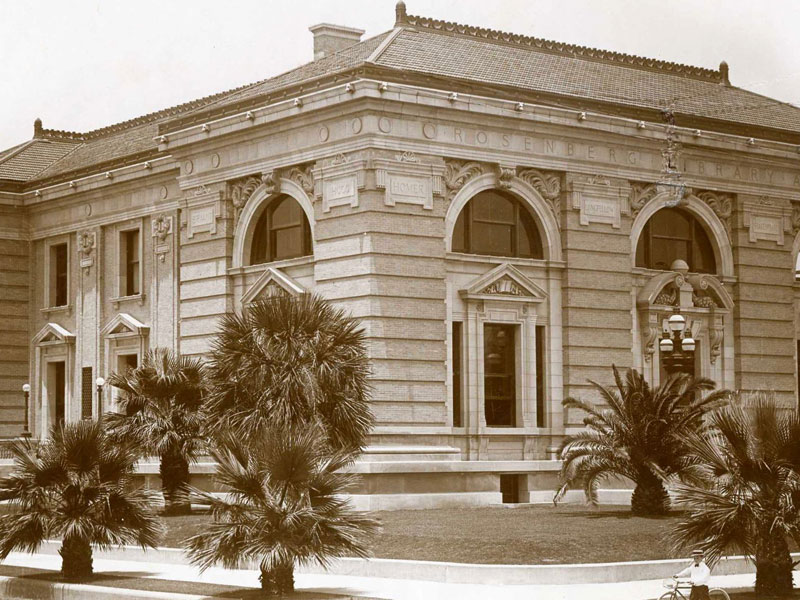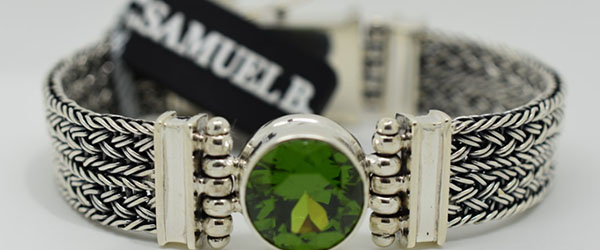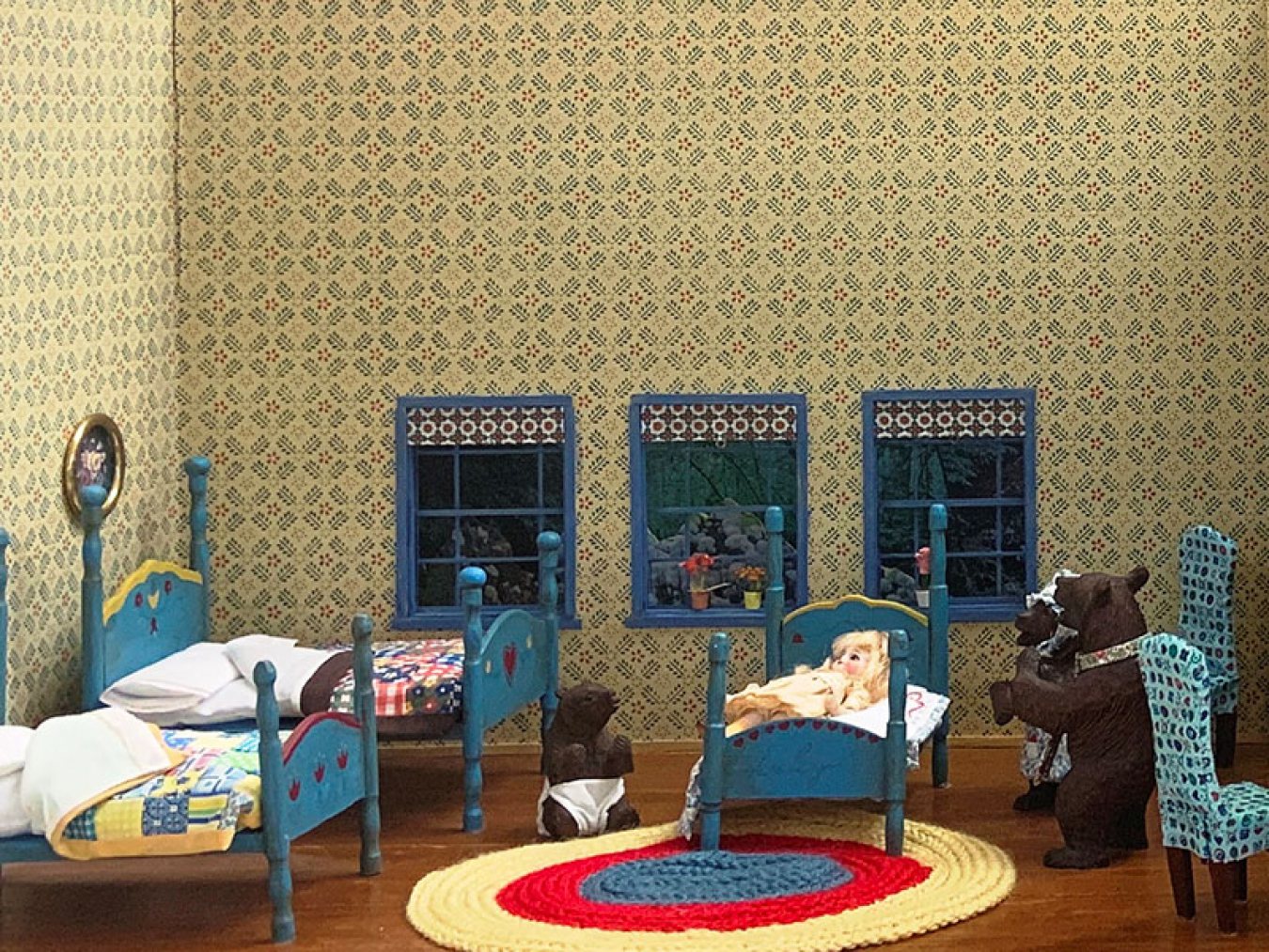Cross Stitch Sampler
Rosenberg Treasure of the Month
During the month of March, the Rosenberg Library is displaying a cross stitch sampler from 1817, created by Eliza Ferrebee Manning Mason.
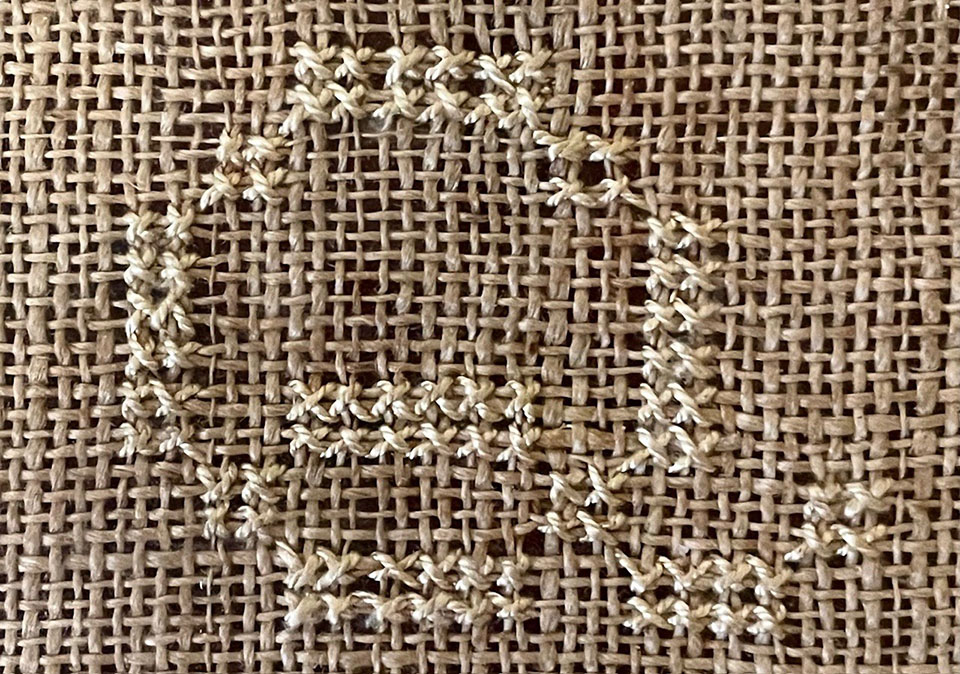
| Cross Stich Sampler | Rosenberg Library and Museum |
To celebrate Women’s History Month, March’s Treasure of the Month is a 19th century needlework sampler that highlights how the decorative arts can provide a wealth of information about everyday women throughout history.
Samplers began in the 1400s as a way for embroiderers and lacemakers to reference different types of stitches and designs. These early samplers were intended for personal, practical use, so designs and motifs were randomly placed and the sampler itself was rolled up and stored away when not in use. Gradually, however, samplers evolved into a way for young women to practice and display their needlework skills, becoming more common from the 1600s onward. Girls from middle or upper-class families would attend schools or hire private tutors that taught embroidery, painting, and other skills.
Needlework was considered an important skill for girls to learn because it was both practical and creative. Learning needlework taught girls patience and neatness and showed off their ability to read and write, as many samplers included the alphabet in their designs. It also allowed girls to mark their linens with their initials so they did not get lost at the launderer’s, and enabled them to add decorations to linens, clothing, and other home décor items.
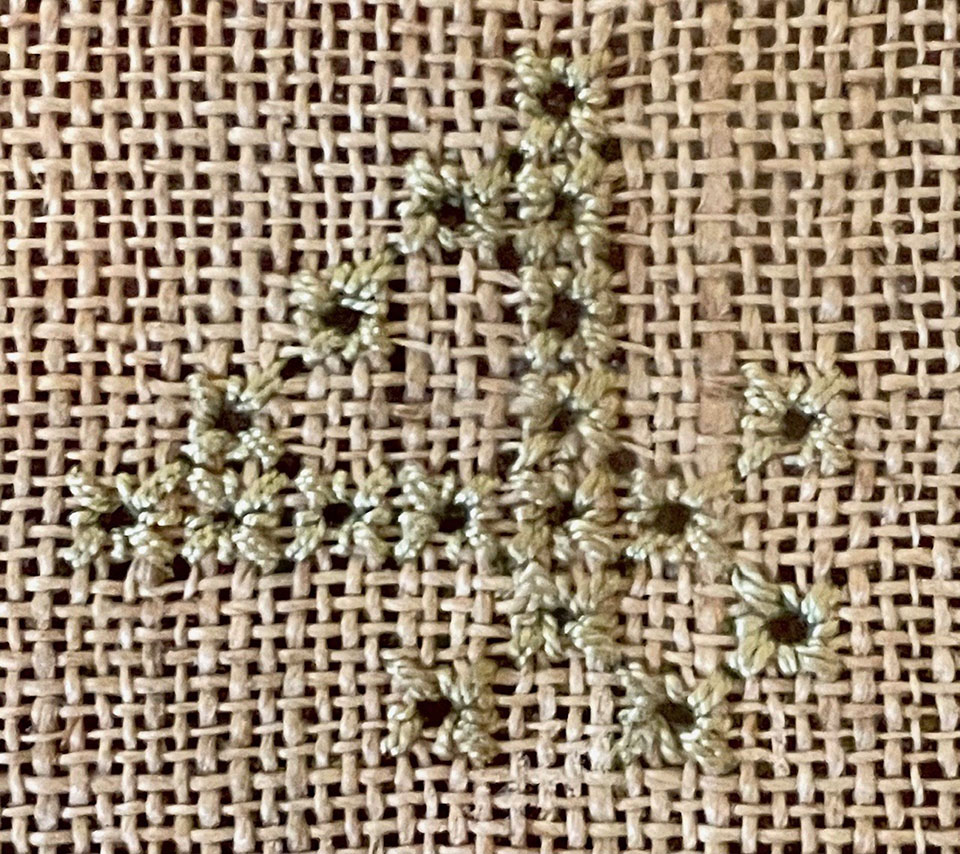
| Algerian Eyelet Cross Stitch Sampler | Rosenberg Library and Museum |
Samplers were usually stitched with silk or cotton thread on linen fabric, although later in the 18th century it became more common to use wool fabric instead. Although every sampler was unique, there were many common motifs, like houses, flowers, alphabets, and proverbs or Bible verses.
These samplers, especially when signed and dated, are often the only historical records we have of everyday women. In fact, some samplers even included family trees and birth information. In the 19th century, the United States government allowed the widows of Revolutionary War veterans to submit samplers proving their relationship as part of their pension applications. These samplers are now preserved in the National Archives as official government documents. But even when samplers were simply used for decoration, it is clear that the women stitching them hoped their work would last for generations, frequently including phrases like “when this you see remember me.”
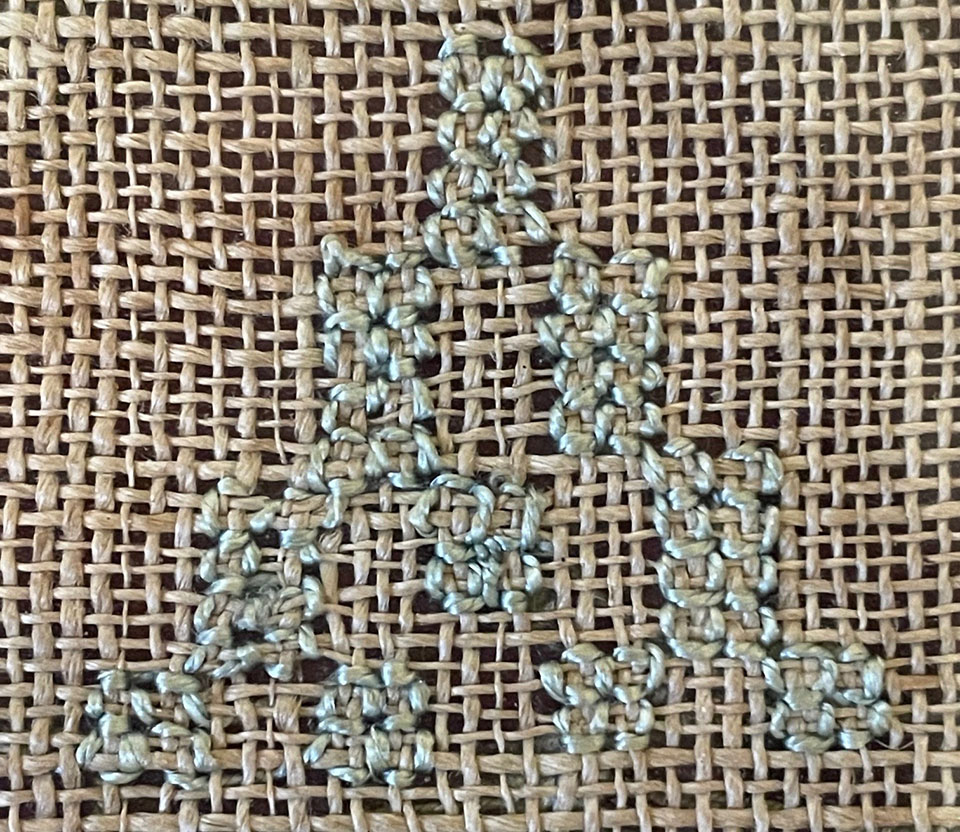
| Four-sided Cross Stitch Sampler | Rosenberg Library and Museum |
This ca. 1817 sampler from our museum collection was stitched by Eliza Ferrebee Manning Mason, who was the grandmother of Jean Scrimgeour Morgan (the artist and community leader for whom the Morgan Room at Rosenberg Library is named). The sampler repeats the alphabet three times and the numbers 1-11 twice, as well as the following phrases: “Baltimore, Aug 15th / Eliza F Manning her sampler finished / when you view this work of mine see how well I spent my time.” Indeed, Eliza’s stitches are very neat, and she employed several different types of stitches such as cross stitch, Algerian eyelet stitch, and four-sided stitch. No sampler is entirely perfect, however: although the sampler has faded considerably, you can see where Eliza ran out of room on the third repetition of the alphabet and had to add the “z” to the line above after “Baltimore, Aug 15th.”
The practice of stitching samplers declined steadily throughout the 20th century, especially after the World Wars. However, there are still needlework guilds and schools around the world today. Cross stitch in particular regained popularity in the 1990s and again in 2020 during the Covid-19 pandemic. Needlework has become a leisure activity that can be enjoyed by all genders, not just women, and there are many patterns reproducing historical samplers as well as more modern art styles.
If you are interested in learning more about needlework and connecting with others who love the textile arts, check out the Unraveling at Rosenberg program on the 2nd Wednesday of each month, from 1-3 pm in the 2nd floor McCullough Room!
The Treasure of the Month is located on the library’s historic second floor near the East Entrance. It can be viewed during regular library hours, 9:00 a.m. to 5:45 p.m. Monday through Saturday and from 9:00 a.m. – 8:45 p.m. on Tuesdays and Thursdays. For more information, please contact Ivy Albright, Museum Curator at 409.763.8854 Ext. 125 or at museum@rosenberg-library.org.
Samuel B Jewelry
Luxury Vacation Rentals Available
Rosenberg Library
Rosenberg Library has offered over a century of community service to the Galveston area, and is the oldest public library in Texas in continuous operation. The building itself was dedicated on June 22, 1904, the birthday of its patron, Henry Rosenberg. The Moody Memorial Wing opened in 1971, more than doubling the floor space and allowing for a children’s library, a history center, several galleries to showcase museum collections, and later, a computer lab. The Library accepted its first museum piece shortly after it opened in 1904. Since then, thousands of rare and interesting objects from around the world have been added to the collection. Each month they display a “Treasure of the Month”. Learn more by visiting the Rosenberg Library page and the Gifts of Henry Rosenberg section.